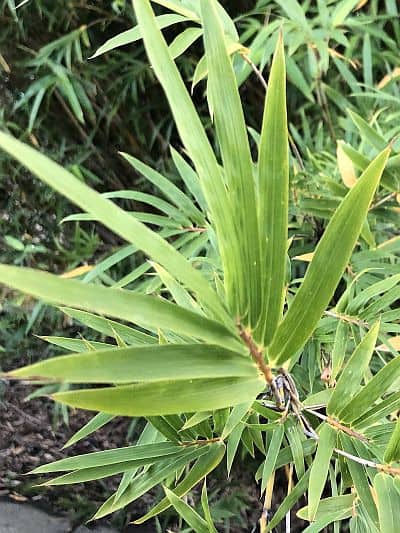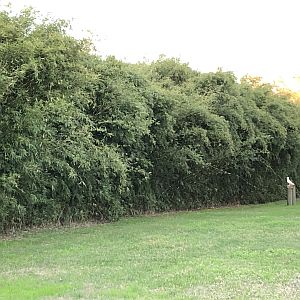Bamboo (Bambusa glaucescens)
When I think of bamboo, my mind immediately goes to a peaceful, Zen garden. As far back as 7,000 years, bamboo was use by the Chinese for food, clothing, housing, transportation, music instruments and weapons. Even today we are using bamboo for flooring, fabric, fencing and in other ways as it grows fast, is sustainable as it regrows. Bamboo it is a member of the grass family. Of course, it is taller and broader than the average grass we grow in our lawns. We know that the panda depends on the leaves of bamboo for its’ diet. According to Charlotte Seidenbergs’ book, ‘The New Orleans Garden’, the owners of Avery Island introduced many Oriental varieties of bamboo to Southwest Louisiana back in the early 1900s.
Bamboo is a woody grass native to the tropics of the Old World. We recognize it by its beautiful canes and leaves that are 8-10inches long. The leaves and canes are green to yellow-green. It grows best in full sunlight to partial shade in moist to dry but rich soils. It will tolerate most conditions however, Old, established bamboo plantings do flower and produce seed but only once in its lifetime and are rarely seen. Propagation is by division and cuttings and is best done in early Spring. Lift younger rhizomes, divide them into smaller clumps and replant at about 5 inches deep in soil. It is best not to let transplants dry out before replanting.
Bamboo is best used for dense screening, containers and barriers. I like the way some have arching habits and the look of the beautiful green or yellow canes. Bamboo is also a good wildlife cover. Bamboo is difficult to keep in bounds and needs space because it has a considerable root system and shades areas close by making it difficult to grow other plants near it. Most bamboo are not tolerant of freezes but there are varieties that are more freeze tolerant than others.
Some bamboos form clumps, others spread by underground rhizomes or runners, but bamboo is slow to establish. If you decide to plant bamboo it is best to use for large areas as it can be difficult to remove and will have to be removed by the roots. Clumping bamboo is recommended as it does just that and grows in clumps and does not overtake areas like the running forms do. If you do have trouble getting rid of old bamboo plantings, the best recommendations if you are unable to dig it is to cut it low to the ground and mow it often and as soon as you see the tender sprouts as it does not like to be mowed. Glyphosate or another strong brush killer herbicide used appropriately (not on a windy day or close to desirable vegetation) may be used to hold it back but may not kill it.

Bamboo varieties: Bambusa glaucescens, or hedge bamboo is the most common bamboo seen in old homes and establishments and can be 10-25 feet. It has a tight crown with canes about ¾ inch. The clumps are easy to recognize. Bambusa glaucescens ‘Fernleaf’, or Fernleaf Bamboo grows in thick clumps is up to 8 feet tall, has dwarf size and fernleaf foliage is said to be early to manage. ‘Golden Goddess’ is good for containers with arching canes and grows to 8 feet. There are many others to choose from and remember to always read the labels for plant dimensions and care instructions.

By Karen Blackburn



